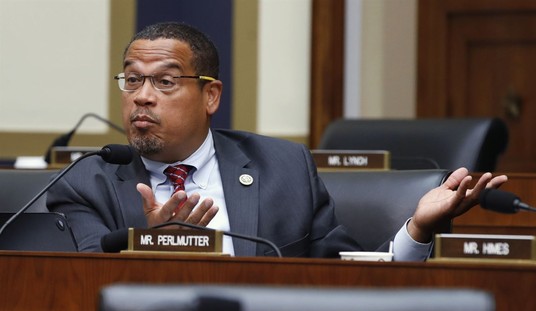There is very little about the case of convicted murderer John Montenegro Cruz that cries out for sympathy or temporal mercy.
According to court records, on May 26, 2003, two Tucson, AZ, police officers, Patrick Hardesty and Benjamin Waters, were dispatched to the scene of a hit-and-run. Their investigation led them to a nearby apartment complex and a unit occupied by Cruz and two women. Cruz fit the description Hardesty and Waters had developed of the hit-and-run driver. When the officers asked Cruz to step outside the apartment and identify himself, he said he was “Frank White.” Hardesty attempted to verify Cruz’s “White” persona by calling police dispatch but was unable to do so. Cruz volunteered he had left his identification in his car. Hardesty accompanied Cruz to the vehicle to retrieve it.
At the car, Cruz leaned in as if he were getting something and sprinted away. Hardesty chased Cruz while Waters drove the patrol car to try to apprehend the suspect.
This is how the court records describe the scene:
When Officer Waters turned the corner, he saw Cruz throw a gun to the ground. Officer Hardesty was nowhere in sight. Officer Waters got out of his car and drew his service weapon on Cruz. Cruz refused Waters’ order to lie on the ground and told Waters to “just do it, just go ahead and kill me now, just kill me.” When Officer Waters holstered his weapon, Cruz leapt over a fence and continued to flee until Waters apprehended Cruz, after a brief struggle.
Officer Hardesty’s body was discovered immediately. He had been shot five times. Two bullets were stopped by his protective vest, two bullets entered his abdomen below the vest, and a fifth bullet entered his left eye, killing him almost instantly. Four of the five shots were fired from no more than twelve inches away.
The handgun thrown down by Cruz was a .38 caliber Taurus revolver holding five cartridges. All five had been fired. The five slugs recovered from Officer Hardesty’s body and vest had been fired from the Taurus revolver. Five unfired .38 cartridges matching the cartridges fired from the Taurus were found in Cruz’s pocket when he was apprehended.
Cruz was tried for first-degree murder, and the state sought the death penalty on the aggravating factor that Cruz had killed a police officer in the performance of his duties. He was convicted. Then the trial went to the penalty phase. His attorney recited the usual litany of childhood horrors that created a man who could gun down a police officer over a traffic offense. There was no evidence of mental deficiency or drug abuse.
During the penalty phase, the prosecution characterized Cruz as a future threat to society. Under Arizona law, defendants convicted of capital crimes and sentenced to life are barred from obtaining parole. Although Cruz’s defense attorney asked permission to inform the jurors that Cruz could never be released from prison, the judge denied the request.
The jury sentenced Cruz to death.
Thus began a series of appeals that is now culminating in a visit to the US Supreme Court in Cruz vs. Arizona.
In 1994, the Supreme Court addressed this very issue in Simmons vs. South Carolina. It ruled that if the prosecution argued future dangerousness in a capital trial, the defendant could offer evidence that they could never be paroled.
Arizona, though, refused to go along with that decision. The Supreme Court of Arizona even ruled that no matter what the US Supreme Court said, Simmons did not apply in Arizona. Then, in 2016, an Arizona case, Lynch vs. Arizona, came to the US Supreme Court on the same issue, and by a 7-2 decision, Arizona was informed that, yes, US Supreme Court decisions applied to it.
Because of the sequencing of events, Cruz missed his chance. Arizona ignored Simmons on his direct appeals, so Lynch didn’t help him. This is how the indispensable SCOTUSBlog describes the state of play:
Cruz’s death sentence became “final” when he exhausted his direct appeals in 2009 — after the U.S. Supreme Court decided Simmons but before it issued the correction in Lynch. Once Lynch was decided, Cruz filed a second state post-conviction petition. Because Cruz never obtained relief under Simmons, he relied on Rule 32.1(g), arguing that Lynch constituted a “significant change in the law,” requiring Arizona to apply Simmons and thus, Cruz was now entitled to relief. According to Cruz, Arizona courts cannot continue to evade applying Simmons and Lynch to his case and others like it. From Cruz’s perspective, by not applying controlling federal law, Arizona is effectively contravening the Constitution’s supremacy clause, which says that federal laws generally take precedence over state laws.
Arizona raises a number of arguments, some narrowly focused on Cruz’s case and others addressing broader concepts, like the relationship between state and federal courts in reviewing a state petitioner’s post-conviction claims. First, Arizona explains that Cruz failed to request a specific jury instruction invoking Simmons even though it was well-settled law by the time of his trial. As a result of this failure, Arizona argues that the issue is not available for state courts to review in post-conviction proceedings. According to Arizona, Cruz’s reliance on Rule 32.1(g) is improper because Lynch did not constitute a “significant change in the law,” it merely applied existing law as established in Simmons. And because Cruz missed his opportunity to properly raise the Simmons issue during trial, he cannot now point to Lynch as being a significant change in the law to obtain relief from Arizona courts. Rule 32 places limits on what Arizona courts can review in collateral proceedings (the appeal process after direct review), and since Cruz failed to meet the requirements of the rule, Arizona courts cannot consider the merits of his federal constitutional claim under Simmons. Moreover, Arizona argues that its decision denying Cruz relief rests on adequate and independent state-law grounds, thus precluding federal review of the claim.
This is why I’ve come to oppose the death penalty.
When a man’s life is in the balance, playing silly games is not something a free society should tolerate. If the prosecutor claims a man presents enough of a future danger to society that he merits killing, his defense attorney should be able to rebut that claim. If the prosecutor wants to refine that argument to claim the man on trial is a future danger to fellow convicts and correctional officers, he can make that case and back it up with plausible evidence. In this case, the jury did not believe the “future dangerousness” argument but was led to believe that life without parole, the statutory punishment, was off the table.
The jury foreperson said after the sentencing that jurors wanted to find a reason to be lenient, but they did not think they had “an option to vote for life in prison without possibility of parole,” so they voted for the death sentence, according to Cruz’s petition.
I don’t have a problem with Cruz being sentenced to death. I have a huge problem with the stupid stunt the prosecutor and trial judge contrived to pull to put him on death row. There is no doubt that Arizona has devoted nearly 20 years in its quest to kill Cruz, despite Supreme Court decisions to the contrary because he killed a police officer, the first such crime in Tucson in over 20 years. I have a problem with Arizona pigheadedly deciding it did not have to obey a Supreme Court decision. I really have a problem with the bad faith gamesmanship Arizona is engaging in to kill Cruz despite the Supreme Court ruling twice that what happened at his trial was illegal. And never forget, if a state thinks it can get away with ignoring Supreme Court precedent and rulings to kill you, why do you think you have a chance in any other encounter with it?
We’ve made the death penalty a game. It takes so long to carry out a death sentence, and the chances of a death sentence surviving appeal are so small that sane people can’t argue a deterrent value. I’m a Catholic; I believe in retributive justice. However, I don’t believe that end is achieved when a man spends several decades awaiting his punishment, or the victim’s family sees justice delayed by a generation or more.
By elevating the death penalty to a game, we’ve put justice aside in favor of scorekeeping. If the death penalty does not provide deterrence, closure to families, or even retribution, all we are left with is the notches on the gavel. Millions, if not billions, of dollars are drained from productive activity to support capital trials where the issue is not whether a man should be put to death; it is not even about guilt or innocence; it is nothing more than a way for attorneys to demonstrate their skill and trickery.
In short, we, as a society, aren’t serious about the death penalty. It only exists as a tool politicians use to motivate their voters and, by the scummiest of district attorneys, to bolster their resumes. It serves no societal function, and it is not worthy of our support.













